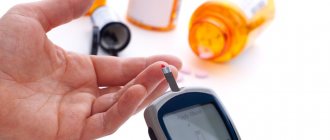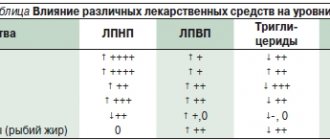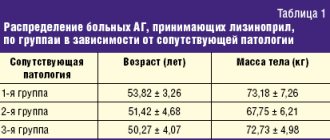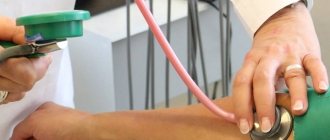Diabetes mellitus requires a person to pay increased attention to health. In particular, the patient must keep the level of caxapa in the blood under control. The saturation of the body's cells with energy depends on this. Their starvation can lead to dangerous consequences, including diabetic coma and death.
To measure your sugar levels you no longer need to visit a clinic. There are special devices - glucometers that are suitable for home use. They do not require medical skills and allow you to track your sugar yourself. We will figure out what types of glucometers there are and what to consider when choosing.
Types of glucometers
The classification is based on the operating principle of the device. Devices for measuring blood sugar levels are divided into invasive and non-invasive. The first involves pricking a finger and collecting capillary blood. They are:
- photometric;
- electrochemical;
- coulometric.
Express test strips are considered separately from invasive glucometers. This is not a device, but rather an indicator of sugar content. Although you also need to pierce your finger to use it.
For children and elderly patients, it is more convenient to use non-invasive ones. They do not require blood for analysis, so the measurement is absolutely painless. This category includes sensor devices (or Raman devices), including laser ones. They determine glucose levels based on subjective factors, so their accuracy is somewhat lower.
Photometric glucometers
These devices read the change in color of a test strip onto which the patient's blood is applied. Such strips are coated with a reagent containing glucose oxidase. It gives specific responses to a particular level of glucose concentration, coloring the strip in the appropriate color.
You don't have to compare colors yourself. The scale is already stored in the device's memory. When a test strip is inserted into it, it compares its color with the values on this scale and produces a numerical result.
Such devices are easy to use, but quickly break down. In addition, their optical system is so fragile that there is a high probability of breaking the glucometer during operation. And if the lens becomes cloudy, the results may be distorted.
Electrochemical glucometers
Their action is based on the amperometric method of analysis. The test strips here are also lubricated with a reagent, but when they come into contact with blood, coloring does not occur. During the reaction, electric current is released. Its strength depends on the sugar level.
Electrochemical devices eliminate a number of disadvantages of photometric devices:
- increased strength;
- the accuracy of measurements has been increased (current strength is a specific value, as opposed to color);
- the required amount of blood for analysis has been reduced.
A child, an elderly person or simply a person with a low pain threshold will definitely prefer this type of sugar meter. The depth of the puncture depends on the required volume of blood. If less is required, the procedure is less painful.
Coulometric glucometers
This is a type of electrochemical meters. The principle of determining glucose concentration is similar to amperometric. Only in this case, it is not the current strength that is assessed, but the electric charge. The required volume of blood for analysis is minimal compared to all other devices.
Amperometric instruments are more often used in laboratory practice, while coulometric instruments are usually used for home use.
The two subtypes differ in the price of consumables. Patients with type 1 diabetes need to measure their glucose more often. Therefore, it is more profitable for them to acquire an amperometric device with cheaper test strips. Coulometric tests are recommended for the control of type 2 diabetes.
Subtleties of choice
The type of disease is not important when choosing a glucometer. The device is a universal measurement tool for both type 1 and type 2 diabetes. But there are other subtleties!
Vladimir Zhuvak says: “Those people who suffer from diabetes and at the same time have a high drug load, whose diet contains sugar substitutes, whose biochemical composition of the blood is not in order, is not recommended to choose glucometers, the instructions of which say that this type of glucometer is characterized by cases influence of interfering substances. If you use brands of glucometers whose operation is affected by oxygen, then you need to take into account that the less oxygen, the less intense the chemical reaction in the blood will take place, as a result, the readings displayed on the glucometer display will be underestimated. And vice versa. This information is especially relevant for people moving below or above sea level, climbing a mountain or, conversely, descending to lowland areas, and having respiratory diseases. Any user must responsibly study the information provided by the manufacturer before purchasing a device.”
Yuri Glukhov's opinion : “There are many nuances that must be taken into account when choosing a glucometer. The device must meet international standard accuracy, be easy to use, quickly produce results, and require a small volume of blood for analysis. Long-term warranty service is highly desirable (in our case it is unlimited). The measurement range is also important - it is necessary that the glucometer can detect both very low and high blood glucose levels. Typically, this range is from 0.6 to 35 mmol/L. I would also like to note that it is extremely important that the device gives a signal about the need to quickly replace the battery. This is necessary so that a person does not end up with a non-working glucometer at the most inopportune moment.”
In conclusion, one more piece of advice. Remember to check your meter every three years - this is the standard verification period. This is done in the manufacturer’s warranty service or in special laboratories. For example, in Moscow this is done at the center for checking glucometers ENTS (Moskvorechye Street, 1).
For reference:
Medtechservice is a Russian manufacturer of a full cycle of diabetic test strips for Gmate Life glucometers, created as part of the implementation of the National Healthcare Project. The company launched its production in mid-2019, gained a foothold in the domestic market and plans to export in 2022.
ELTA is the first Russian manufacturer of means for express measurement of blood glucose levels. The company's products are exclusively its own original developments. Exports glucometers to Kazakhstan, Uzbekistan, Kyrgyzstan, Belarus.
Text: Lydia Gromeka
Post Views: 831
Rules for using a glucometer
Anyone can use this device at home. The main thing is to have consumables (test strips) in stock if the measurement is carried out using an invasive method. It is important to monitor their expiration date: damaged products will not provide the required accuracy.
Using a glucometer comes down to a few simple steps:
- thorough hand washing;
- disinfection of the puncture site;
- pricking the fingertip with a lancet;
- applying blood to the test strip;
- inserting the strip into the device.
The sequence of the last two steps depends on the type of device. The photometric strip is inserted with blood already applied. It is placed clean in the electrochemical one.
There is no need to insert express strips anywhere. Just wait for the color to change. With non-invasive it is even easier. It is only necessary to ensure contact with the skin (the area depends on the type of device).
What else will you need besides a glucometer?
Buying a glucometer is half the battle. To measure glucose levels, you also need other components: a lancing pen , lancets , also known as scarifiers (cartridges for lancing the skin that are inserted into a lancing pen) and test strips . The range in cost of test strips in a package of 50 pieces, depending on the manufacturer, varies from 480 to 1,500 rubles per package. Patients with type 1 diabetes require 150-180 test strips per month, type 2 diabetes a little less. For the first days, the test strips included in the kit along with the glucometer will be enough.
Gmate LIFE Product Suite
If you can choose a lancing pen and lancets that go with it according to your taste and wallet, then for each glucometer, for accuracy of measurements, only certain strips from the same manufacturer are suitable; there are no universal ones for all models, so the choice of glucometer will affect how much money you will spend on test strips. Please note that you will have to buy additional consumables quite often in any case.
A comfortable piercing pen should have different puncture depth modes, since the skin of adults, the elderly and children differs in thickness and requires different piercing forces, manufacturers remind.
It should be noted that the primary kits accompanying the glucometer are practically the same from different manufacturers.
Vladimir Zhuvak talks about his own products: “The kit with our Gmate Life glucometers, which have a lifetime guarantee, allow you to store 500 measurements and have an auto-encoding function, also includes a case, 25 test strips, a lancing pen, ten disposable lancing lancets and instructions for application."
The Satellite Express kit, according to Yuri Glukhov, includes the device itself with a battery, a control strip that allows the user to independently diagnose the glucometer to ensure its serviceability, a case, test strips (25 pcs) with a code strip, and a pen - piercer, disposable scarifiers (25 pcs), instructions.
The Satellite Express kit includes the glucometer itself with a battery, a control strip for self-diagnosis of the device, a case, test strips (25 pcs) with a code strip, a lancing pen, disposable scarifiers (25 pcs), instructions
“Our pharmacy, like most others, offers both domestic and foreign glucometers. Buyers are still more likely to buy foreign ones, but I don’t see a fundamental difference between them. Russian glucometers are gaining more and more market share every year. They are cheaper, but at the same time practically not inferior in quality. An important argument in support of our glucometers is that patients registered with an endocrinologist in city clinics can receive free test strips for them. They are also issued to imported ones, but to ours much more often and in greater numbers.”
Natalya Brichkina, pharmacist
Is it possible to take blood from something other than a finger?
Traditionally, blood for testing is taken from a finger or from a vein. In the case of assessing sugar levels, venous is not very preferable. It contains more glucose than capillary, and there is a high risk of incorrect interpretation of the analysis. Therefore, blood for sugar is taken from a finger.
But there are many nerve endings in the fingertip. For many people, piercing is too painful. Therefore, there are high-quality glucometers that include the ability to analyze blood from:
- shoulder;
- forearms;
- shins;
- hips.
It's not that painful to pierce them. However, blood circulation in these parts of the body is slower than in the fingers. Therefore, changes in glucose levels do not always appear in a timely manner according to analyzes from alternative sites.
Device coding
This is a procedure on which the accuracy of the results depends. It allows you to bring the device itself and the test strips that come with it into maximum compliance. Older models required manual coding. It was replaced by electronic chips.
The most advanced devices do not require coding. It occurs automatically when the test strip enters the housing. The glucometer reads the code and configures itself.
No Coding technology was developed because it became apparent that most patients were not completing the necessary adjustments. The coding procedure cannot be ignored, as this reduces the accuracy of measurements. As a result, it is not possible to accurately determine the dose of insulin that needs to be administered to the patient.
Reading information
Each glucometer is configured to the parameters of a given pack of test strips and reads information in the following way:
- codeless glucometer. This type of device is perfect for older patients;
- glucometer device with manual coding input function. The test strip code must be entered manually. An affordable and accurate device, but this type of device is convenient for people with good eyesight;
- glucometer device with chip function. The patient simply inserts a chip into the device, which is sold with test strips;
- glucometer device with automatic fine-tuning function without patient intervention. But the cost of a glucometer with such test strips is significantly higher. Although this is a very convenient type, it is better to choose for the elderly, novice users, and medical institutions.
As a result of everything stated, we can say that the accuracy of glucometer measurements does not directly depend on the method of processing information, but may depend on the correctness of the manipulations.
How to choose the right glucometer
You can see many models on the market. Equally high-quality devices differ in the degree of convenience for a particular user. You can understand which glucometer is best to buy for your home by answering a few questions:
- Which type of device is most convenient for you?
- Does the required blood volume matter? For the elderly, children and especially sensitive people, the depth of the puncture is important.
- Is measurement time important? Faster ones cost more, but not everyone needs them.
- What test strips are available in pharmacies near you?
- Is additional plasma calibration required? In simpler devices it is carried out through capillary blood.
- How much memory is needed? This determines how many last measurements can be recorded.
It is important to decide whether additional features are needed. Modern sugar meters can have a lot of them. But their presence is not necessary.
Basic criteria for choosing a glucometer for an elderly person
Options for choosing a blood glucose meter for older adults include:
- Ease of use. It is important that a person can use the device independently without difficulty;
- Practicality. The device should be convenient and practical; if you have vision problems, worry about choosing a model with a large screen;
- Strength. An elderly user may accidentally touch the device and it will fall - the device must have a durable body and be reliable.
There are also models of glucometers with voice guidance or other functions that simplify the use of the device. Check the maximum functionality of the model you plan to buy.
For children and teenagers
When choosing a glucometer for your child, consider the following points:
- Diagnostic speed. Children often cannot sit still, so it is better to purchase a device that quickly takes measurements;
- Invasive or non-invasive type of device;
- Compact, practical and reliable in operation.
At Medtekhnika Orthosalon you can choose a glucometer according to the technical characteristics that are necessary in your individual case. When you visit any of our orthosalons in your city, our sales consultants will always be ready to help you. They will help you choose medical equipment and answer any questions you may have.
Additional functions of the meter
Typically, the device only measures the blood glucose concentration using a preset method. The kit includes the device itself, a set of test strips for the first time and a lancet for piercing the skin.
More expensive models come with statistical options, including separating measurements taken before and after meals. This is convenient for those who forget to fill out self-monitoring diaries.
A glucometer for an elderly or visually impaired person may have a voice assistant or a backlit display. The additional expense in this case is justified. You can also invest in an option with an auto-lancer, because not everyone has the fortitude to do it manually.
Options such as the ability to communicate with a computer or smartphone, the presence of extra control buttons and a timer are unimportant. Some sugar meters also analyze cholesterol levels.
iCheck iCheck
A device with an electrochemical measurement method and a memory for 180 readings. Calibrates the result using blood, which requires only 1.2 µl to take measurements. The cost of the model is about 1000 rubles. And among the reasons for its inclusion in the rating of the best options for purchase is the high quality of test strips coated with a special protective layer.
Not one, but two whole electrodes are responsible for the measurement result, which makes them more accurate. Although because of this, the measurement time is higher than most other glucometers - as much as 9 seconds. The user can find out the average result for a week or month. And the kit includes a small bag for storing the device itself and its accessories. The list of disadvantages includes the need for coding, although it makes the measurement results more accurate.
Rating of the best devices
A high-quality glucometer can only be purchased at a pharmacy or medical equipment store that has the appropriate license. There are numerous manufacturers on the market that receive positive reviews. Their ranking is as follows:
| Manufacturer | Popular models |
| Accu-Chek (Germany) |
|
| OneTouch (Switzerland) |
|
| Bayer (Germany) |
|
| Diamedical (Taiwan) |
|
| Bioptik (Taiwan) |
|
| 77 Elektronika Kft (Hungary) |
|
| iHealth (USA) |
|
| CareSens (South Korea) |
|
| Satellite (Russia) |
|
| AgaMatrix (Germany) |
|
Tokareva Lyudmila Georgievna, therapist, medical offices 36.6
THERE ARE CONTRAINDICATIONS, BEFORE USE YOU MUST CONSULT WITH A SPECIALIST








